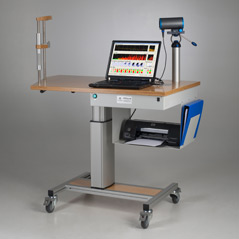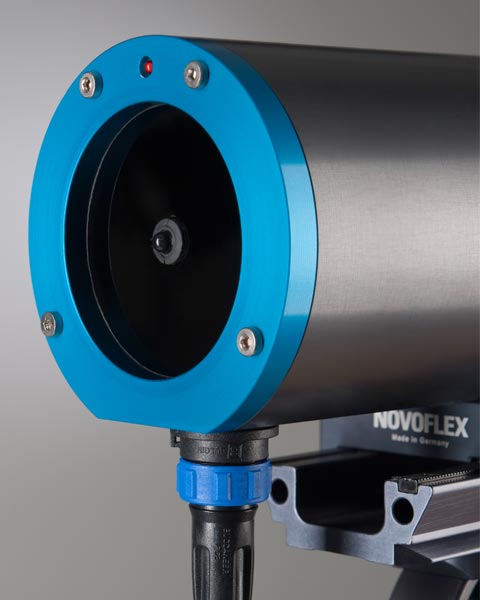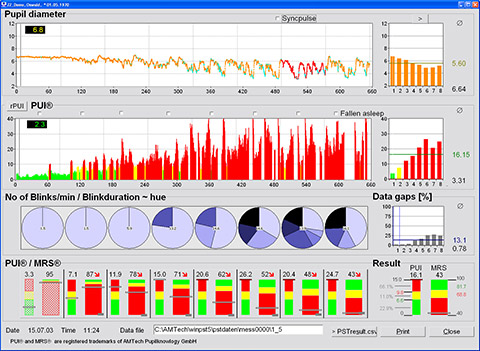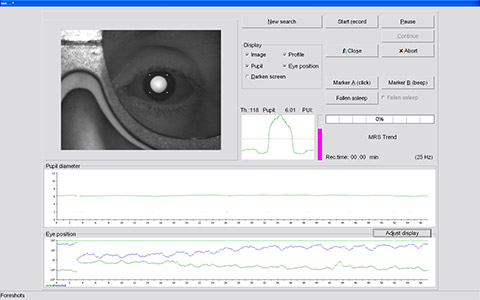PSTxsIII Pupillographic Sleepiness Test


Recording the spontaneous and involuntary pupil movement in darkness is the simplest method to measure and evaluate sleepiness objectively.
The Pupillographic Sleepiness Test PSTxs is an easy to operate, non-invasive and fast tool to obtain an objective assessment of the central nervous activation and drug related vigilance.
The PST is designed for medical practice and clinical application as well as for the sleep lab.
The PST is the ideal tool for screening, diagnosis, therapy control and an expert opinion of excessive daytime sleepiness like OSAS, narcolepsy, restless leg syndrome, insomnia etc. The system also provides useful data for shift work or for personnel in high risk careers.
Areas of application are sleep medicine, occupational medicine and pharmacology.
Pupillographic
Sleepiness
Test
The simplest way
to measure sleepiness.
PSTxs specifications
- Infrared video camera
- Recording time up to 11 minutes
- Sampling frequency 25 Hz
- Spatial resolution 0,05 mm
- Integrated patient data base
- Comfortable import/export of data
- Network compatible
- Built-in backup
- All data in ASCII-format
- Windows® XP


The sleepiness waves are monitored by means of a IR-videocamera with built-in IR-illumination. The subject is bespectacled with a pair of goggles which are opaque for visible light and transparent for infrared light. Thereby the measurement is performed in darkness and only a crimson and dim fixation target is seen.
The pupil movement is recorded for up to 11 minutes, and from this pupillogram (orange/ yellow) the pupillary unrest index PUI (green) is calculated. The PUI value is a quantitative measurement of the pupil diameter variation and sleepiness. The PUI is compared against a standard reference (green/yellow/red) and no further data evaluation is needed.
The protocol gives additional helpful information about the pupil diameter and the PUI over time, the horizontal and vertical eye position, the rate and duration of blinking and the data quality.
The PSTxs is equipped with wheels for easy acess to patient rooms and no additional space or darkened room is required.

These two examples illustrate the characteristic pupil diameter variation caused by daytime sleepiness. The time course of the dupil diameter is plotted. The upper diagram of an alert subject shows much less pupil diameter changes than in the lower diagram of a sleepy subject. Notice the extreme undulations of a sleepy person's pupil.
